“Without art, our world would be grey and depressing”
Interview with art collector Eric van ‘t Hoff
“Art is much less important than life, but what a poor life without it”. This quote by artist Robert Motherwell encapsulates the lifelong dedication to art that characterizes the Dutch collector Eric van ‘t Hoff. Ever since he, as a young boy, saw a painting by Salvador Dali, art has been a key theme in the story of his life. As an art lover, a seasoned collector, and a loyal supporter of the local art scene, van ‘t Hoff never doubts art’s potential to change the world for the better. From the personal joy of building a collection to the investment in our collective cultural heritage – or in his own words – “Without art, our world would be grey and depressing”. Read the full interview with Eric van ‘t Hoff below.
Name: Eric van ‘t Hoff
Location: Nigtevecht, the Netherlands
Started collecting in year: 1992
Number of artworks in collection: 40+
Name of collection: Abstract Going Dutch
Social Media: https://twitter.com/ericvanthoff
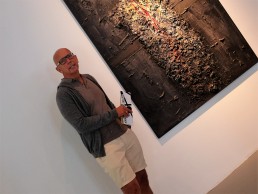
What is your earliest memory of art, and what led you to start collecting?
In 1970, at the age of 10, I remember seeing an artwork by Salvador Dali at the Museum Boijmans Van Beuningen in Rotterdam, the Netherlands. The painting featured an elephant, and I remember asking my parents why the legs of the elephant were so long and almost invisible. In my mind, elephants should be drawn with big fat legs, so this absurd and unrealistic universe really made my imagination run wild. In retrospect, this exhibition made me aware of art’s potential to foster the development of creativity and encouraged me to pursue this budding interest, which eventually developed into a true passion.
A book about the De Stijl – a movement, founded in 1917, that proposed ultimate simplicity and abstraction, put me on my path towards starting a collection. I first came across the book in my parents’ house in 1984, and when I read it for the first time, I could not understand why someone had spent time and energy on publishing a book with meaningless images in only three colors. Then, when my father told me that one of my granduncles was mentioned in the book, I felt my curiosity being aroused. Over time, I began forming a genuine interest in and understanding of the meaning of Mondrian’s geometric compositions and of my granduncle Robert van ‘t Hoff’s straight-line architecture. In addition, I started to realize that anyone can make a painting, but that not everyone has the ability to define its concept.
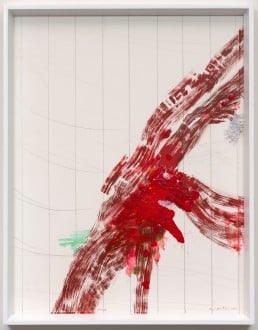
What is the main motivation behind your collecting?
First of all: the visual pleasure. Being able to enjoy great art in the comfort of my own home is a huge joy. The artworks constitute a peaceful space that calms my mind at the end of a busy workday. Secondly, it is a great privilige to be able to allow talents to thrive and continue to beautify our planet with their creations. The impact of art on our daily well-being is much higher than many people realize. Without art, our world would be grey and depressing. When buying contemporary art, you are not only supporting the art industry at that given moment in time, you are also contributing to tomorrow’s cultural heritage. This is also the reason why I, during the past 10 years, have been actively involved in supporting more museums and art foundations, for instance by giving lectures and facilitating art tours.
Describe your collection in three words.
Abstract Going Dutch.
Abstract, because I initially believed that figurative art was uncreative and too simple to conceive. Going Dutch, because my budget is not endless, but mainly because my taste evolved in line with the Dutch tradition of painting landscapes, portraits, and cityscapes with the horizon as inspiration and soberness as principle.
Do you remember the first artwork you purchased?
It was an expressive abstract gouache (70×100 cm) by a Dutch local painter called Geert Vrijdag (1943 – 1999), which I bought in 1992 for the equivalent of 1.200 euros. I eventually realized that this work served as the foundation of my whole collection and as a reference for all future acquisitions. So, it truly was the start of an endless journey called ‘Abstract Going Dutch’.
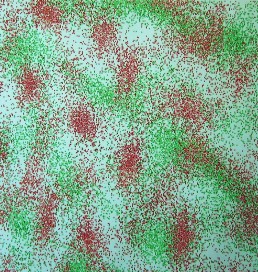
Is there any particular type of art that appeals to you or anything that unites all the works in your collection?
As already mentioned, my collection is characterized by a tendency to soberness, but also by harmony, perfectionism and innovation, the latter being the most important component. The artist must be the first to have created that type of image.
How important is it for you to meet the artist behind an artwork in your collection?
In my early days, I was scared to death to talk to an artist in person. I considered them half-gods who could only be approached by museum directors. Today, I still respect artists deeply but I certainly enjoy talking with them about what motivates them, by whom they are inspired, what they have achieved so far, how they see the future, and, last but not least, why someone should buy the particular piece that I also happen to be interested in.
What is the most recent piece of art you added to your collection and why?
An untitled acrylic and oil on canvas (50×70 cm) by the Dutch painter Koen Delaere (1982, http://koendelaere.nl) bought in November 2017 at Galerie Gerhard Hofland in Amsterdam. To me, Koen is a contemporary version of influential painters like Brice Marden, Frank Stella, Robert Mangold, Agnes Martin, or Robert Ryman. Painters who are driven by the aim to show the basic principles of light, form and colour. Koen is doing so by showing us the interaction between colours by painting them on wave-formed ripples. The work itself is less sober and softer than most works in our collection, but I decided to add it anyway because I wanted to try something totally different to awaken the other works and bring out their stories in new ways.
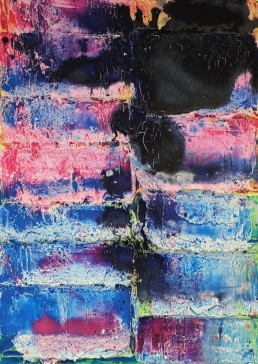
What work of art do you wish you owned if the price tag did not matter?
There are too many to mention, but if I was about to choose a piece in this very moment, I would pinpoint a work by Ger van Elk (1941-2014) from 2000 which depicts the Kinselmeer lake close to Amsterdam. The piece is cut in two along the water line, painted, photographed again and printed on two plexiglass frames. With this twisted composition, Ger van Elk forces the viewer to review the concept of the horizon – how do the eyes interpret the line? Is it the sky that meets the ground or the sea that touches the land?
What do you enjoy the most: The hunt associated with collecting art or the joy of ownership?
I often quote the artist Robert Motherwell when speaking about the pleasure to own an art collection. As he said: “Art is much less important than life, but what a poor life without it”. With this in mind, I must admit that the entire process of identifying, qualifying, evaluating, and selecting the next artwork is fun as well. A nasty downside being that the hunting process can be stressful, since I’m often not sure if I’m making the right choice at the right time for the right object.
What is the collecting scene like in Amsterdam?
It has opened up a lot during the past years. Galleries and artists nowadays are much more oriented towards collectors and young couples who might just need a few artworks that fit into their living room. Furthermore, Amsterdam is home to some of the world’s best museums, art fairs, art galleries, and art academies, so there is never a dull moment for art lovers here. The city also happens to be the center of various initiatives aimed at attracting a younger public such as the Young Collectors Circle, the Amsterdam Art Weekend, the Caius Circle of the Rembrandt foundation, the circle of the Stedelijk Museum, the Open Academy days, Art Amsterdam, the Unseen photography festival, and the annual Museum Night being just a few examples. By having grown into such a wide breeding place for contemporary art, I can only say that the collecting scene in Amsterdam is vibrant, versatile, cutting-edge and yet very affordable.
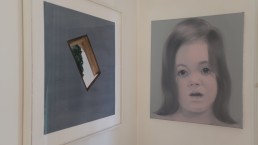
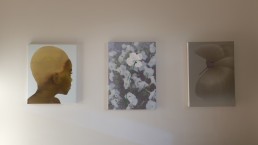
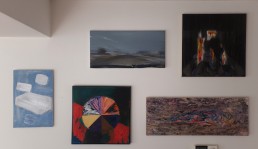
Has digitalization changed the way you collect art?
I wish digitalization and applications like Artland would have existed when my passion for art collecting started back in the nineties. That would have saved me tons of time finding books, publications, galleries, and museums referring to an artist I was interested in. With the rise of the internet, information about art has become available at the click of a mouse. This means that the hunting process nowadays is much shorter but also far less stressful since decisions can be taken with much more confidence. Consider for example all the references that one can find in an application like Artland by just clicking and reading while sitting in the train. A luxury I couldn’t have dreamed of some decades ago.
What or who has influenced you as a collector?
Collecting just happened over time. Collecting art is like drinking a good bottle of wine and not being able to stop taking a second glass, a third and so forth. One experience that might have influenced me is that I couldn’t understand during my early days that exhibitions in a museum often showed artworks that didn’t belong to the museum itself but were loaned by so-called private collectors, with some even having a name (!). This stunned me so much that I started to dream of being able to do the same. That dream came true already 5 times but not all on purpose. Loaning works to museums just happens over time as well.
What are the wishes for the future of your collection?
First and most important, more hanging space! Our house has become far too small, and I hate the idea of not being able to see all our works when at home. Secondly, to establish over time a collection that might be worth a book or an exhibition.
Where do you think the future of the art market is headed?
I personally expect the current economic growth to have a very positive impact on the art industry. Today’s mainstream art will flourish strongly thanks to an exponential increase of emerging collectors. Experimental art will finally receive the opportunity to develop new art forms by being able to explore new ‘display’ technologies such as augmented reality, organic user interfaces, 3D printing, virtual reality and holography. Tomorrow’s images, compositions, and colours will continue to react on social, cultural and political themes, but I’m expecting those images to be visualized in very different ways than what we are use to today.
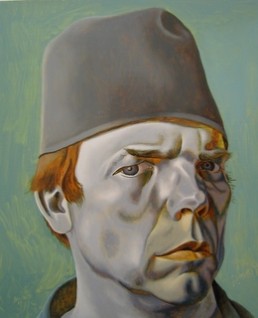
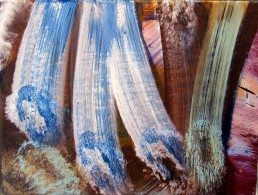
Top three pieces of advice for new collectors
1. Choose one artwork that matches your emotional mindset and aesthetic preferences, and let this work serve as a reference to build your collection.
2. Listen to your eyes, but also pay attention to the story behind the artwork. A work of art is like falling in love. A partner needs to look as nice from the outside as from the inside. What your eyes are seeing is just 50% of the artwork.
3. Realize that collecting art also means giving back. It is about having a responsibility to support the art world. Become a friend of your preferred museum or join an art foundation. Network, participate, and enjoy!
Top three art destinations
1. Castello di Rivoli Museum of Contemporary Art, Turin, Italy: https://www.castellodirivoli.org
2. De Pont Museum of Contemporary Art, Tilburg, The Netherlands: http://www.depont.nl
3. Sakıp Sabancı Museum, private fine arts museum, Istanbul, Turkey: http://www.sakipsabancimuzesi.org
Three inspiring artists to watch
1. Natasja Kensmil: http://natasjakensmil.nl
2. Esther Tielemans: http://esthertielemans.com
3. Berend Strik: http://berendstrik.nl

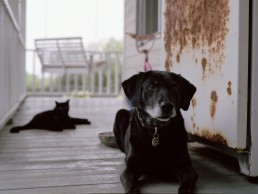
Get your free copy of Artland Magazine
More than 60 pages interviews with insightful collectors.